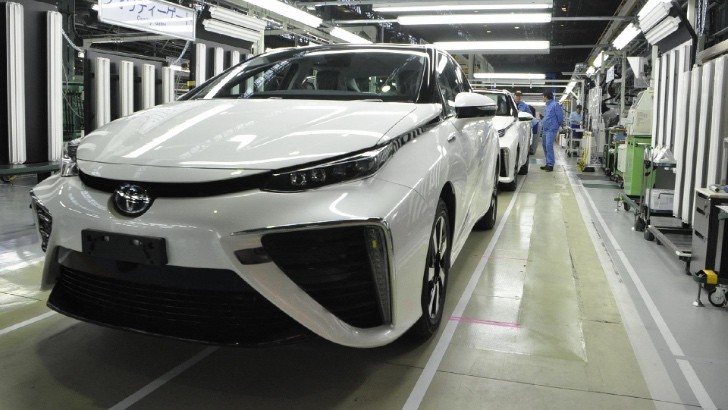Old models, new models, tables are turning and they all come and go as trends and carmakers see fit. Few know that when a new model is ready to play in the global automotive playground, preparation is everything if you want a job well done. And this is exactly what Toyota wants us to feel about Mirai's production process.
Here comes the hydrogen fuel cell technology and you can't do anything to stop it. Not while Toyota is alive and kicking and especially not as long as Mirai managed to receive 1,500 orders in its first month of sale in Japan.
This is probably one of the reasons why Toyota decided to take us on a journey through the facility where the Mirai is produced, a sacred placed for Toyota and Japan's automotive history. I know, it sounds big, but it really is and there's a good reason behind that.
But Mirai is next in line and the hydrogen fuel cell powered sedan will receive the same amount of attention for staff, according to Toyota. The assembly line for the Mirai is divided into three main sections: trim, chassis/fuel cell assembly and final assembly.
Before each Toyota Mirai body is brought to the former LFA Works assembly line, it is painted at the mass production line within the Motomachi Plant. The doors are then removed and work is being done on the interior: wire harness, instrument panel, main battery and roof lining, among other things. You should also know that the Toyota Mirai features a CFRP (carbon fiber reinforced polymer) fuel cell stack frame, the same material BMW uses for its i3 and i8.
There's a lot more to see in the videos below and in the photo gallery and since one picture is worth 1,000 words, feel free to check them all out.
This is probably one of the reasons why Toyota decided to take us on a journey through the facility where the Mirai is produced, a sacred placed for Toyota and Japan's automotive history. I know, it sounds big, but it really is and there's a good reason behind that.
For starters, the Motomachi Plant in Toyota City saw its first vehicles leaving the production line in 1959
The plant began its duties as Japan's first dedicated passenger car production facility and over time, models like the RAV4, the Supra and recently the Lexus LFA supercar left its robotized internal organs.But Mirai is next in line and the hydrogen fuel cell powered sedan will receive the same amount of attention for staff, according to Toyota. The assembly line for the Mirai is divided into three main sections: trim, chassis/fuel cell assembly and final assembly.
Before each Toyota Mirai body is brought to the former LFA Works assembly line, it is painted at the mass production line within the Motomachi Plant. The doors are then removed and work is being done on the interior: wire harness, instrument panel, main battery and roof lining, among other things. You should also know that the Toyota Mirai features a CFRP (carbon fiber reinforced polymer) fuel cell stack frame, the same material BMW uses for its i3 and i8.
There's a lot more to see in the videos below and in the photo gallery and since one picture is worth 1,000 words, feel free to check them all out.
















